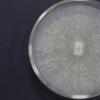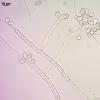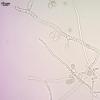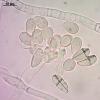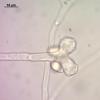
02-12-2025 18:59
This pair of ascos 2.5cm across were on recently b

02-12-2025 19:25
Buckwheat PeteHello, can anyone identify this hairy fungus growi

30-11-2025 12:53
 Edvin Johannesen
Edvin Johannesen
White short-stipitate apothecia found on thin twig

30-11-2025 10:47
 William Slosse
William Slosse
I recently found a collection of small Peziza sp.

27-11-2025 12:01
Thomas Læssøehttps://svampe.databasen.org/observations/10496727

27-11-2025 11:46
Thomas Læssøehttps://svampe.databasen.org/observations/10493918

17-09-2025 10:50
Heather MerryleesHi there!I am hoping for any advice on the identif

29-11-2025 08:40
 Andreas Millinger
Andreas Millinger
Hello,on a splintered part of a branch on the grou

28-11-2025 16:45
Nogueira HéctorNovember 23, 2025 Requejo de Sanabria (León) SPAI
Rhodotarzetta's anamorph ?
Nina Filippova,
01-03-2015 13:22
I have something Botrytis- like that may by an anamorph of Rhodotarzetta rosea in culture but i am not sure. I have inoculated dried pieces of apothecia and there were similar looking colonia in all Petri dishes. I am only learning in cultivation technique (it is still winter, therefore i use dried material) and thefore could have mistakes. Please, if you have some suggestion about this anamorphic species, it would be wonderful to know.
Potato-glucose-yeast-agar-charcoal (PH7): Colonia fast growing (9 cm in 3 days), grayish, with brownish conidial mass, pubescent, floccose and forming small sclerotia-like blobs, with not distinct radial zonation.
Yeast-agar-charcoal (PH7): Similar characteristics, but colonia much thinner, slowly growing and conidia barely forming.
Conidiophores about 5 broad, dichotomously branched, terminal fertile cells inflated up to 12 in diameter, producing conidia on short stalks; conidia ellipsoid, with short stalk, pale colored, light brownish in mass by naked eye, *13.7 (9,8-16.2) [17.7] x 6.7 (6-7.7), n=15.
The inoculation of a swan (sand-bran-charcoal) produced extensive growth, all volume was colonized in a week; no apothecia formed so far.
Hans-Otto Baral,
01-03-2015 15:24

Re : Rhodotarzetta's anamorph ?
Did you compare Oedocephalum? I am not familiar here but this would be my first idea.
Zotto
Zotto
